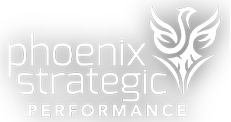Anti-Change Is Systemically Embedded. And We STILL Ask, “How Come Change Management Is So Difficult?"
We use the term change very casually these days. Change literature is all around us. Change management is now considered a core management skill. Organizations talk about how employees need to embrace change. So if there’s all this noise about change, why is the reality of change management more like pushing molasses up a mountain?
Let’s take a look at what is really at the core of why organizations exist. By understanding what is really at the core of why organizations exist, we might then be able to understand why studies still show a 60 – 70% failure rate for organizational change projects.
4-Point Anti-Change Reality Check
Organizations have evolved out of a need to bring people and processes together to ensure the delivery of quality, predictable, repeatable outcomes. That’s why operations in organizations exist.
- Process: It is important that processes that are repeatable and predicable become embedded in the organization.
- Structure: After processes are in place, structures are then created to ensure that processes deliver conformity.
- People: People are then expected to work within the constraints of the process and structure to once again, ensure things are done the same way over and over again. In the staffing process, we hire the kinds of people who want to work in this controlled, status quo work environment.
- Managers Who Are Not Change Managers: And if process, structure and people issues aren’t enough, we put managers in charge of rolling out change projects, who are not trained and developed in the complexities of successfully managing Change Management.
All these issues amount to layers of inertia that have been painstakingly built into the system. They do not go away by wishing and hoping. Check to see how much inertia is really embedded in your organization. We invite you to read Part 1 and Part 2 of this Change Management blog series as well!
In our future blogs, we will be covering each of these topics focusing on overcoming embedded organizational inertia that could be resisting change in your organization.





